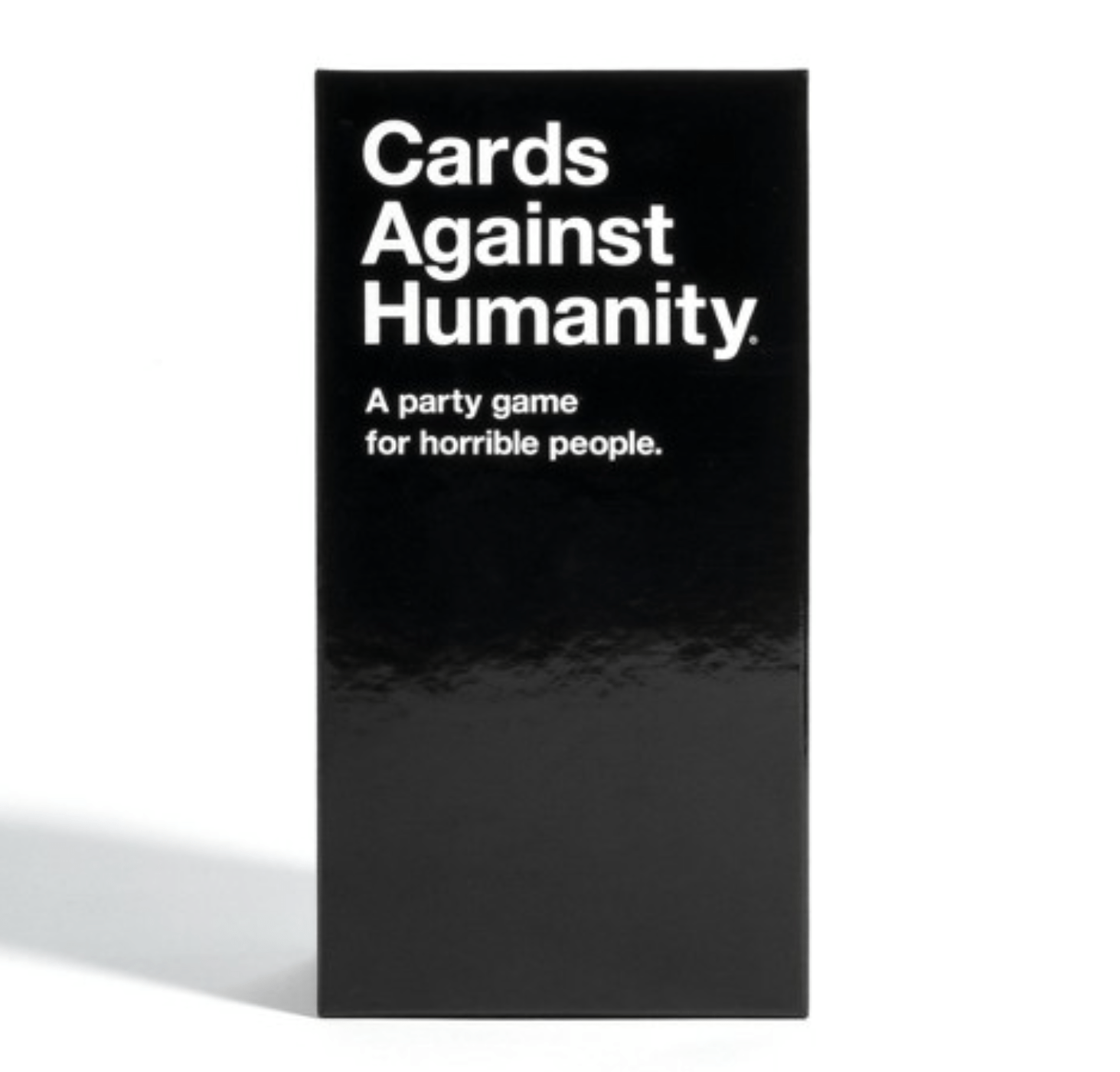Cards Against Humanity, created by a company of the same name and available as a card game, is a mature-oriented 18+ judgment game for friends that instructs players to pair up two types of mature, humorous, sometimes topic-oriented cards to create the funniest combination. The game can be played with any number of reasonable players greater than three (up to around 15 most likely). During each round, a player looks at their black cards and picks the card they think best suits a white card in play. Afterward, the ‘card czar’ (who shifts after every round) judges the card combinations and picks the one they think is the funniest or most relevant combination. Thus, a player either only sends out a card, or judges a card, making the game’s elements simple to pick up. The game ends whenever a group decides, but often after a player accumulates 5 or 6 white cards.
Card Against Humanity tackles fellowship and sometimes expression as their form of fun. The social aspect comes into play when people use the combinations of cards to spin into stories or arguments or relevant experiences, bonding a group closer together. This thus also fits in with expression- if players decide to argue for a card, they have to option to probe deeper into how they envision two cards fitting together, giving them a creative outlet. These elements make the game more compelling as these endless combinations spawn a jump-off point for light-hearted arguments, conversations, laughter, and memories.
The relaxed and easy nature of the game makes the game work well within its genre- it works perfectly as a party game as the game can either stay in the foreground of a group interaction or blend into the back- it can be picked up easily with more people immediately, a round can be left alone for a while, the game can end whenever without many stakes, a card that a group is not comfortable with can be skipped. However, sometimes groups have found some original Cards Against Humanity cards to be a little too specific or a little too on the edge, especially as a black card ( a card that you can choose in your hand). Oftentimes people have house rules that you can discard any card that you’ve been carrying around for too long that you simply don’t like, but adding this within the official mechanics may make the game more fluid, as during our play one of the debrief suggestions was that sometimes, if the white card wasn’t a good card, players would replicate the card’s energy and send in a card they’ve been wanting to get rid of, simply to get rid of it. This would often break the atmosphere of the game, as two clearly mismatched cards would enter the fray.
CAH differentiates itself from the other games in its genre in its heavily mature themes and use of deeply specific cards. Thus, CAH can only be played with a group of friends comfortable with each other enough to delve into more sensitive and mature themes- primarily college-aged friends. There is simply a very core audience to CAH- it doesn’t make it a better or worse game versus other judgment games such as skribbl.io or Apples to Apples. These games do not require a prior comfort level and are much tamer than CAH. CAH’s vulnerability is in an interesting area- it does not require a player to reveal anything explicit about themselves, but its maturity often still requires a level of vulnerability if a group as a whole is unsure about their group norms when it comes to mature topics.



